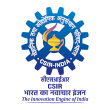Development and Promotion of Non-POPs Alternatives to DDT





Malaria is a disease caused by the biting of the Anopheline mosquito vectors. Vector control is the major component of the strategy for malaria control which aims to prevent parasite transmission through interventions targeting adult malaria vectors. For this, chemical, biological and mechanical methods are applied. In chemical approach of controlling malarial mosquitoes, insecticides have been used extensively for larviciding, indoor residual spraying and impregnation of bed nets in the last few decades. As a result of this, vector resistance to these insecticides have been recorded in various parts of the country and mosquitoes have developed wide spread resistance to some of these insecticides. Insecticide resistance has become huge problem not just for malaria but also for other vector borne diseases. Indoor residual spraying (IRS), larvicide in urban areas and long-lasting insecticidal nets (LLINs) are vector control measures used in India, but the development of insecticide resistance poses major impediments for effective vector control strategies. Presently, three insecticides, DDT (organochlorine), malathion (organophosphate), and mostly synthetic pyrethroids, are used in the country. For larval control temephos, bacterial larvicides (Bacillus thuringiensis var. israelensis, insect growth regulator (IGR) compounds (diflubenzuron, pyriproxyfen), and for space spray, malathion (technical) Pyrethrum Extract and Cyphenothrin are used in the country.
A comprehensive analysis of insecticide resistance data from India between 1991 to 2016 indicated an increase in resistance and the potential to derail the progress made in reducing malaria transmission. Mixed-age field-collected preferably full-fed stage mosquitoes were used in the study. Primarily, mosquitoes are exposed to insecticides in use in vector control in public health; namely DDT, malathion, and deltamethrin, and exposure to other insecticides was made to assess susceptibility to insecticides in the same or different classes of insecticides approved for vector control for more qualitative data. These tests were conducted using the standard WHO methods and kits to WHO specified discriminatory dosages of insecticide-impregnated papers.
Update on insecticide resistance in India
The primary malaria vector Anopheles culicifacies .showed resistance to DDT (50/50 districts including two districts of Northeastern India), malathion (27/44 districts), and deltamethrin (17/44 districts). This species was resistant to DDT alone in 19 districts, double resistant to DDT-malathion in 16 districts, double resistant to DDT-deltamethrin in 6 districts, and triple resistant to DDT-malathion-deltamethrin in 9 districts. Anopheles minimus. and Anopheles baimaii were. susceptible in Northeastern India while Anopheles fluviatilis. and the secondary malaria vector Anopheles annularis. was resistant to DDT in Jharkhand.
In the conclusion of this study, we report that among the primary vectors, Anopheles culicifacies shows predominant resistance to multiple insecticides. Our data strongly suggest that periodic monitoring of insecticide susceptibility is crucial. The national malaria program should take proactive steps towards insecticide resistance management to sustain its efforts towards malaria elimination in India.